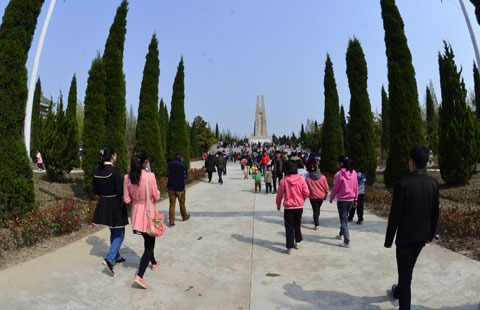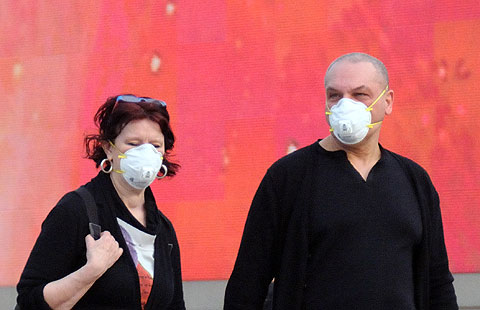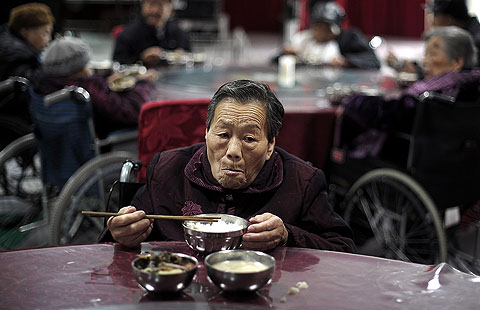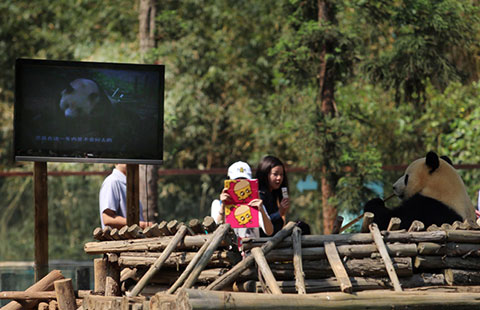Safe drinking water becoming scarce
Updated: 2014-04-17 07:13
By Asit K.biswas and Peter Brabeck-letmathe (China Daily)
|
|||||||||||
Some recent water pollution-related incidents have roused serious concerns across China. The latest one occurred in Lanzhou, Gansu province, on April 11: excessive levels of benzene were detected in the city's tap water. Local authorities later said crude oil leaking from a pipeline had contaminated tap water supplied to 2.4 million people in the city. Benzene levels in the water returned to normal only on April 14.
The Lanzhou case is just one example of the looming water crisis in China. In 2011, water in more than half of China's largest lakes and rivers was deemed unfit for human consumption. Last year, the Ministry of Environmental Protection conceded that, "toxic and hazardous chemical pollution has caused many environmental disasters, cutting off drinking water supplies...leading to severe health and social problems'."
Worldwide, the water crisis is even more alarming, but it hasn't drawn enough attention. In 2012, the UN announced that the Millennium Development Goals' target of halving the number of people without sustainable access to safe drinking water had been achieved well ahead of schedule, with only 783 million people still lacking access to clean water. But the Third World Center for Water Management estimates that at least 3 billion people worldwide still drink water of dubious quality. AquaFed, which represents private water companies, puts this figure at 3.4 billion - nearly half the world's population. This suggests that the UN's declaration of victory was premature.
India's situation is worrisome, with the state-run Central Pollution Control Board reporting last year that nearly half of the country's 445 rivers are too polluted in terms of biochemical oxygen demand (an indicator of the organic quality of water) and coliform bacteria to be consumed. If other pollutants - such as nitrates, fluorides, pesticides and heavy metals - were considered, the figure would be significantly higher.
Likewise, Pakistan's National Assembly was informed last year that 72 percent of the samples collected from the country's water supply systems were unfit for human consumption, with 77 percent of the groundwater in urban areas (and 86 percent in rural areas) deemed hazardous.
In Nepal, the Department of Water Supply and Sewerage has said 85 percent of its traditional water supply systems are seriously contaminated with bacteria, iron, manganese and ammonia.
And in Mexico, 90 percent of the country's nearly 25,000 water utilities were operating in a state of bankruptcy in 2013.
The problem with international organizations' approach is that they conflate the vague notion of "improved water sources" with genuinely clean, safe drinking water. In the same way, they have diluted the goal of "improved sanitation" - the process of collecting, treating and safely discharging wastewater - by applying it to indoor toilets in people's homes.
This glosses over a major discrepancy between sanitation and adequate wastewater management. While nearly 90 percent of the households in the National Capital Region of India (Delhi and its adjoining areas) are said to have adequate sanitation, because they have indoor toilets, nearly all of the untreated wastewater from the NCR is discharged into the Yamuna River - a source of drinking water for cities downstream.
Related Stories
Safe drinking water becoming scarce 2014-04-17 07:13
Water-splashing festival marked in Yunnan 2014-04-16 15:24
Shadow over water sources 2014-04-16 08:00
Lanzhou admits to problems in water supply 2014-04-16 07:07
Today's Top News
US says Ukraine not on brink of civil war
China unveils new economic package
In-flight Web access put to test
Beijing's neighbors source of PM 2.5
China covers 646,000 sq km searching for MH370
S.Korean ship rescue begins
Geneva talk on Ukraine 'welcome'
China urges Syrian talks
Hot Topics
Lunar probe , China growth forecasts, Emission rules get tougher, China seen through 'colored lens', International board,
Editor's Picks

|

|

|

|

|

|





